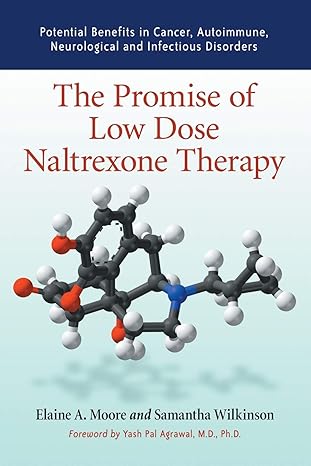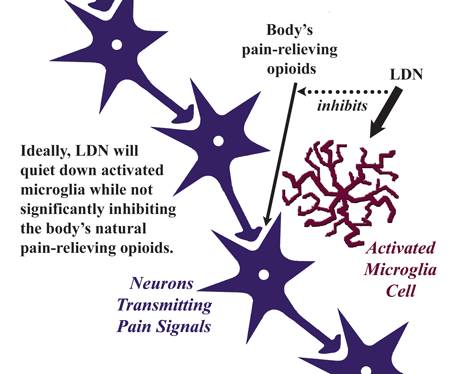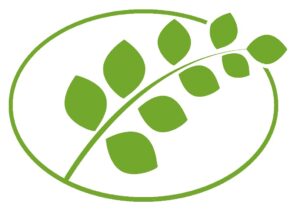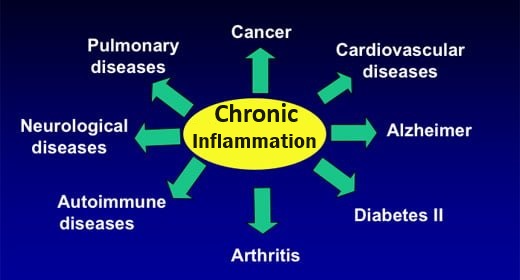Low Dose Naltrexone (LDN) - For auto immune disease


LDN is an immune regulator for auto-immune diseases + cancer, AIDS / HIV, COPD and the common cold
- Prescribed “off-label”, Low Dose Naltrexone (generic name) is a prescription drug given at unconventionally low doses showing great promise in treating autoimmune diseases (including central nervous system disorders, cancer and HIV/AIDS). Naltrexone is a pharmacologically active opioid antagonist usually used to treat drug and alcohol addictions. An FDA approved drug for over two decades, it is normally used at doses of 50 -300mg.
- At low doses (3 – 4.5 mg) researchers found Naltrexone has immuno-modulating properties – that may be able to successfully treat cancer malignancies and a range of autoimmune diseases E.g. Rheumatoid arthritis, M.S., Parkinson’s, fibromyalgia, Crohn’s disease. Dr. Jacquelyn McCandless even found LDN to have a positive effect on autistic children.
- Low cost
- Appears to be virtually free of detrimental side effects
- Few physicians are aware of this usage of LDN. At a price of ~$15-45 / month, it is not backed by big Pharma.

How does low dose naltrexone (LDN) work?


LDN effects on immune system
Results from studies indicate that LDN benefits the immune system in several ways:
- LDN reduces inflammation /oxidative stress
- LDN reduces apoptosis of oligodendrocytes in MS
- LDN down regulates but doesn’t eliminate inflammatory cytokines
- LDN facilitates tissue repair and wound healing
- LDN targets microglial cells (small non-neural cells that collect waste products of CNS nerve tissue) and neuropeptides (endogenous protein molecules that influence neural activity by carrying information directly to the cells and tissues. Included are VP, CCK, substance P, enkephalins, and endorphins) .
- LDN stimulates the release of neurotrophic factor (family of substances with roles in neuron maintenance and survival) from astroglia (neuron support cells)
- LDN restores CD4 levels in HIV infection
- LDN increases levels of natural killer (NK) lymphocytes
- LDN increases beta endorphin levels – research is finding that natural endorphins play a part in the body’s immune system (IS)
“Opioid-Induced Immune Modulation: … Preclinical evidence indicates overwhelmingly that opioids alter the development, differentiation, and function of immune cells, and that both innate and adaptive systems are affected.1,2 Bone marrow progenitor cells, macrophages, natural killer cells, immature thymocytes and T cells, and B cells are all involved. The relatively recent identification of opioid-related receptors on immune cells makes it even more likely that opioids have direct effects on the immune system.”
1. Low Dose Naltrexone for Various Pain Relief | Harbor Compounding, 2. www.lowdosenaltrexone.
- LDN blocks opioid receptors. www.lowdosenaltrexone.org states that taking LDN at bedtime improves immune function by marginally blocking your opioid receptors for a few hours in the middle of the night, Believed to up-regulate vital elements of your immune system by increasing your body’s production of metenkephalin and endorphins (your natural opioids), hence improving immune function.


What health problems has LDN benefited?
From the www.lowdosenaltrexone.org website. Bernard Bihari, MD, as well as other physicians and researchers, have described beneficial effects of LDN on a variety of diseases:
Cancers Low Dose Naltrexone (LDN) against Cancer• Bladder Cancer Other Diseases• Common Colds (URI’s) Syndromes• Chronic Fatigue Syndrome (CFS) | Autoimmune neuro-degenerative:• Amyotrophic Lateral Sclerosis (ALS/(Lou Gehrig’s Disease) Other Autoimmune Diseases:• Ankylosing Spondylitis |
In addition to the above list, LDN Research Trust in the U.K. mentions other health conditions for which LDN may be of benefit:
| Conditions where LDN could be of benefit | |
|---|---|
| Acute disseminated encephalomyelitis | Acute hemorrhagic leukoencephalitis |
| Addison’s Disease | Agammaglobulinemia |
| Alopecia areata | Amyotrophic Lateral Sclerosis (ALS) |
| Anti-GBM/TBM Nephritis | Antiphospholipid syndrome |
| Antisynthetase syndrome | Asthma |
| Atopic allergy | Atopic dermatitis |
| Autoimmune aplastic anemia | Autoimmune cardiomyopathy |
| Autoimmune enteropathy | Autoimmune hemolytic anemia |
| Autoimmune hepatitis | Autoimmune inner ear disease |
| Autoimmune lymphoproliferative syndrome | Autoimmune pancreatitis |
| Autoimmune peripheral neuropathy | Autoimmune polyendocrine syndrome |
| Autoimmune dermatitis | Autoimmune thrombocytopenic purpura |
| Autoimmune urticaria | Autoimmune uveitis |
| Balo disease / Balo concentric sclerosis | Bechets Syndrome |
| Berger’s disease | Bickerstaff’s encephalitis |
| Blau syndrome | Bullous pemphigoid |
| Cancers | Castleman’s disease |
| Chronic inflammatory demyelinating polyneuropathy | Chronic recurrent multifocal osteomyelitis |
| Churg-Strauss syndrome | Cicatricial pemphigoid |
| Cogan syndrome | Cold agglutinin disease |
| Complement component 2 deficiency | Cranial arteritis |
| Crohns Disease (one of two types of idiopathic inflammatory bowel disease “IBD”) | Cushing’s Syndrome |
| Cutaneous leukocytoclastic angiitis | Dego’s disease |
| Dercum’s disease | Dermatitis herpetiformis |
| Diabetes mellitus type 1 | Diffuse cutaneous systemic sclerosis |
| Discoid lupus erythematosus | Dressler’s syndrome |
| Eczema | Enthesitis-related arthritis |
| Eosinophilic fasciitis | Eosinophilic gastroenteritis |
| Epidermolysis bullosa acquisita | Erythema nodosum |
| Essential mixed cryoglobulinemia | Evan’s syndrome |
| Fibrodysplasia ossificans progressiva | Fibrosing aveolitis |
| Gastritis | Gastrointestinal pemphigoid |
| Giant cell arteritis | Glomerulonephritis |
| Goodpasture’s syndrome | Graves’ disease |
| Guillain-Barre syndrome (GBS) | Haemolytic anaemia |
| Hailey -Hailey Disease | Hashimoto’s encephalitis |
| Henoch-Schonlein purpura | Herpes gestationis |
| Hypogammaglobulinemia | Idiopathic Inflammatory Demyelinating Diseases |
| Idiopathic pulmonary fibrosis | Idiopathic thrombocytopenic purpura (See Autoimmune thrombocytopenic purpura) |
| IgA nephropathy | Inclusion body myositis |
| Inflammatory demyelinating polyneuropathy | Interstitial cystitis |
| Juvenile idiopathic arthritis | Juvenile rheumatoid arthritis |
| Kawasaki’s Disease | Lambert-Eaton myasthenic syndrome |
| Leukocytoclastic vasculitis | Lichen planus |
| Lichen sclerosus | Linear IgA disease (LAD) |
| Lou Gehrig’s disease (Also Amyotrophic lateral sclerosis) | Lupoid hepatitis |
| Lupus erythematosus | Majeed syndrome |
| Meniere’s disease | Microscopic polyangiitis |
| Miller-Fisher syndrome | Mixed Connective Tissue Disease |
| Morphea | Mucha-Habermann disease |
| Myalgic Encephalomyelitis (ME) | Myositis |
| Neuromyelitis optica (Also Devic’s Disease) | Neuromyotonia |
| Occular cicatricial pemphigoid | Opsoclonus myoclonus syndrome |
| Ord thyroiditis | PANDAS (pediatric autoimmune neuropsychiatric disorders associated with streptococcus) |
| Palindromic rheumatism | Paraneoplastic cerebellar degeneration |
| Paroxysmal nocturnal hemoglobinuria (PNH) | Parry Romberg syndrome |
| Pars planitis | Parsonnage-Turner syndrome |
| Pemphigus | Pemphigus vulgaris |
| Perivenous encephalomyelitis | Pernicious anaemia |
| POEMS syndrome | Polyarteritis nodosa |
| Polymyalgia rheumatica | Polymyositis |
| Primary biliary cirrhosis | Primary sclerosing cholangitis |
| Progressive inflammatory neuropathy | Psoriatic arthritis |
| Pure red cell aplasia | Pyoderma gangrenosum |
| Rasmussen’s encephalitis | Raynaud phenomenon |
| Reiter’s syndrome | Relapsing polychondritis |
| Restless leg syndrome | Retroperitoneal fibrosis |
| Rheumatoid fever | Schmidt syndrome |
| Schnitzler syndrome | Scleritis |
| Spondyloarthropathy | Still’s disease |
| Subacute bacterial endocarditis (SBE) | Susac’s syndrome |
| Sweet’s syndrome | Sydenham chorea |
| Sympathetic ophthalmia | Takayasu’s arteritis |
| Temporal arteritis (also known as “”giant cell arteritis””) | Tolosa-Hunt syndrome |
| Undifferentiated connective tissue disease | Undifferentiated spondyloarthropathy |
| Vasculitis | Vitiligo |
Clinical Studies on Safety and Benefits of LDN for Autoimmune Diseases
A couple of research examples follow, but a complete list of past and current research is at the lowdosenaltrexone.org website.
- LDN for Multiple Sclerosis. Dr. Maira Gironi, an Italian neurological researcher, treated 40 patients affected with Primary Progressive MS (PPMS) with LDN for six months,concluding that LDN was not only safe and well-tolerated, but halted the progression of the disease in all but one patient. Results published in the journal Multiple Sclerosis .
- LDN for Crohn’s Disease. In a pilot study involving 17 Crohn’s disease patients, Low-Dose Naltrexone Therapy Improves Active Crohn’s Disease, an impressive two-thirds of the patients in her pilot study went into remission, and 89% responded to LDN treatment to some degree. Smith J. et al, Apr. 2007, American Journal of Gastroenterology

How to Use LDN
FIRST – Cautionary warnings / Side-effects
Adverse events reported in clinical studies – temporary insomnia and vivid dreaming in some patients.
Cautionary warnings – according to lowdosenaltrexone.org, special precautions are required if any of the following situations apply:
- If you use opioid agonists, do not take LDN until such medicine is completely out of your system. i.e. narcotic medications such as Ultram (tramadol), morphine, Percocet, Duragesic patch or codeine-containing medication;
- Patients taking thyroid hormone replacement for a diagnosis of Hashimoto’s thyroiditis with hypothyroidism need to begin LDN at the very lowest range (1.5mg for an adult). As LDN may lead to a prompt decrease in the autoimmune disorder, which then may require a rapid reduction in the dose of thyroid hormone replacement in order to avoid symptoms of hyperthyroidism.
- People who have received organ transplants. These people are taking immunosuppressive medication on a permanent basis and are cautioned against the use of LDN because it may act to counter the effect of those medications.
Using LDN
LDN should be obtained by prescription – i.e. under medical approval if deemed appropriate; although it can also be obtained OTC cheaply, but admittedly with questionable reliability (E.g. <$50/mth at 4.5mg/day). If purchased in 50mg tablets, they can be ground up and repackaged as 4.5 mg capsules or made into 4.5 mg liquid doses at home
LDN is available as:
- Liquid
- Capsules
- Sublingual drops
- Topical cream
Ideally obtain LDN from a reliable pharmacy – a list of such is given at lowdosenaltrexone.org
- LDN capsules should not contain calcium carbonate as a filler -since it has been found to interfere with absorption of LDN capsule
- DO NOT get LDN in slow-release form
Usual adult dosage is 4.5 mg taken once daily at night (to avoid interfering with rhythms of the body’s production of master hormones). LDN is best taken between 9pm and 3am. Most patients take it at bedtime. Therapeutic dose range is 1.5 mg – 4.5 mg, lower doses have no effect and higher doses likely block endorphins for too long, interfering with effectiveness
Exceptions include:
- With multiple sclerosis that has led to muscle spasms – use only 3mg daily and maintain that dosage
- For those with Hashimoto’s thyroiditis with hypothyroidism who are taking thyroid hormone replacement medication – please read about intial dosage of LDN in Cautionary Warnings above.
- For Cancer – do not take LDN the week before and the week after cancer chemotherapy (this does not include the drug tamoxifen or daily medications for prostate cancer).
See lowdosenaltrexone.org for more details
LDN Research Trust (in UK) suggests that one should gradually build up to the therapeutic dose over a period of weeks – until you are stable /side effect free. The starting dose can vary from 0.5mg to 1.5mg – and is usually increased over 4 – 8 weeks to 4.5mg.
- For Autoimmune Diseases – normally start at 1mg and increase to 4.5mg daily over a period of 4 weeks.
- For Hashimotos, Chronic Fatigue Syndrome, Fibromyalgia or cancer – usually start with 0.5mg and increase by 0.5mg a week until 4.5mgis reached.

How to Make 4.5 mg Liquid Doses from 50 mg Naltrexone tablets
Supplies Needed
- 50 mg tabs of naltrexone
- 5ml syringe or graduated baby medicine dropper
- 4 oz amber glass jar with a tight fitting lid
- Distilled water
Instructions
- Fill a graduated cylinder with 50 ml of distilled waterthen pour into a 4oz glass jar;
- Drop in one 50mg Naltrexone tablet.
- The tablet will mostly dissolve in about 2 hours – Note that not all of the tablet is soluble in water so instead of yielding a clear solution, the result will be a cloudy suspension.
- One ml of the SHAKEN suspension will contain one mg of Naltrexone
- Use a graduated baby medicine dropper or 5-ml syringe to measure out the dose you need.
Since liquid form has a dramatically decreased shelf life, do not make more than 50 ml of liquid Naltrexone at one time, store it in the refrigerator, and do not keep it for more than 2 months.
Be sure to shake the liquid LDN well before using and keep from direct exposure to sunlight.













